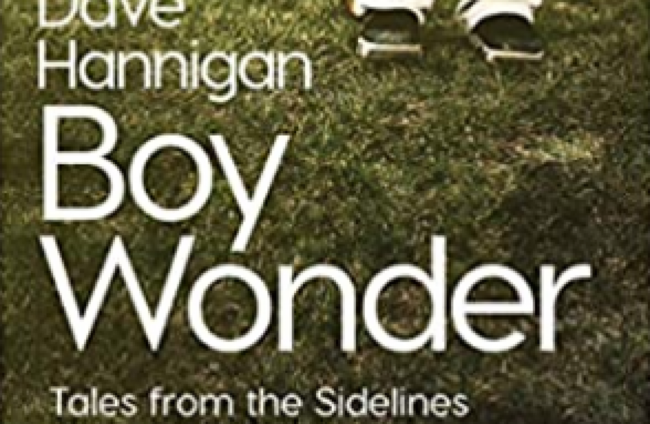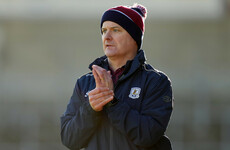THE FOLLOWING PASSAGE is an extract from Dave Hannigan’s ‘Boy Wonder’.
One of my favourite pages in SHOOT! was called ‘World Wide’. It carried snippets of news from distant countries whose names I often encountered for the first time when reading about some bizarre football-related story. It was there I discovered the Copa Libertadores, exotic clubs like River Plate, Colo Colo and Independiente, and the fact that soccer existed on every corner of the planet.
‘Trouble in the African Champions’ Cup Final in Conakry, Guinea,’ wrote Christopher Davies in a typical entry. ‘Home side Hafia beat Mouloudja of Algeria 3–0 in this first leg battle. Two Algerians were sent off for spitting at the referee.’
This was also the place where I first came across the New York Cosmos and the North American Soccer League. The club and the competition were immediately attractive because they were American and, to us, America was then this faraway land of glitz and opportunity that we glimpsed on television. It was Hollywood. It was Jim Rockford. It was F-Troop. It was The Brady Bunch. Their soccer looked different too. The grass in the photographs was ridiculously green because, in most instances, it was, of course, astroturf. The stadia were cavernous and spacious and just bloody huge, confirming our childhood impression that everything in the United States was somehow bigger and better.
The Cosmos were an instant fascination because around that time they had Johan Neeskens in their team. Like Cruyff, he was a Dutch icon, so we loved him unconditionally in our house. I was also taken by their white and green shirts – which had a slicker design than the English jerseys we marvelled at each week. I’m not sure why I thought this although it may have had something to do with them wearing numbers on the front as well as the back. Novelty was everything.
Farranlea Park was about as far removed from the Cosmos and Giants Stadium as it was possible to get. Nestling behind an old stone wall on the Farranlea Road, it was a soccer pitch with a serious slope from one sideline to the other and, invariably, a mud patch where the grass used to be down the centre of the field. It was the home of Wilton United FC. The first time I entered this arena I walked in as part of a crack (well, not really) Summerstown United U10 team to play a Southside League match.
There were no dressing-rooms (as was the norm back then) so both squads got togged out under the shade of the trees that separated the ground from the GAA field next door. As the Wilton players started to make their way in dribs and drabs onto the field, I immediately noticed a couple of odd things. The person directing these kids, their manager, was a monk. A man in a brown robe with a white rope tied at the waist. An actual monk. A monk like the ones we regularly saw in pairs shuffling around the North Main Street when I went shopping with my mother in town.
That wasn’t even the strangest sight. Far more peculiar was the fact they were all wearing full sets of authentic, proper kit. I don’t meant they were all wearing roughly the same coloured shirts and shorts like we were. No, this was a matching, real kit. From top to toe. On closer inspection, I discovered that the logo on the front of their shirts was familiar too. It was the unmistakable ball logo of the New York Cosmos. This was too much. I seethed with envy and felt suddenly inferior.
Before the first whistle blew that day, we were beaten. How could we not have been? We looked like Raggyball Rovers, they looked like a serious soccer team, resplendent in gleaming American shirts that made them look faster and stronger. We lost because we were so dazzled by the wonder of their kit that we couldn’t possibly concentrate on the task at hand. Or, they might argue, we lost because they were a lot better than us at soccer as well as fashion. They had substance to go with their style.
Inevitably, there was a story about how Wilton United had come across their fantastic gear. According to one of their players who was in my class at school, a character who may or may not have been the most reliable of witnesses, it was all the work of the resourceful and remarkable monk on the sideline. His name was Brother Alfie, and he was a Capuchin based at St Bonaventure’s monastery just down the road from the field.
Legend had it that the enterprising Brother Alfie had written to the New York Cosmos asking them to sponsor an impoverished Irish soccer club that was doing Trojan work, keeping boys off the streets and out of crime. Suitably impressed by this plea, boxes of shirts and shorts and socks in all children’s sizes were soon winging their way across the Atlantic Ocean.
There were a few problems with this version of events. For starters, Wilton was not an impoverished area, by any means.
And I’m not sure a soccer club owned by Warner Bros would have been that philanthropic either, certainly not to a charity case three thousand miles away in another country. In any case, I wasn’t overly concerned with poking holes in the conspiracy theory at the time because I was brimming with jealousy of the boys who got to wear the white and green of Neeskens and the Cosmos every single week!
My neighbour Ian O’Leary started playing for Wilton United around this time. He didn’t even like soccer that much and yet suddenly it was like he was almost, by proxy, a member of the New York Cosmos. My envy of him didn’t last that long because in the summer of 1982, as we sat in the square in front of our houses, trying to come up with ways of making money, he had an idea. We should go ask Brother Alfie for a job. After all, anyone capable of procuring the most flash sports gear Cork had ever seen could surely figure out a way to help us.
Bold as brass, we cycled the two miles to St Bonaventure’s, made our way around the back of a grey, foreboding building and knocked on the door.
‘Can we speak to Brother Alfie?’ we asked.
The monk who greeted us didn’t seem perturbed. Alfie ran a soccer club. Kids probably came calling all the time.
‘We’re looking for summer jobs,’ said Ian when Alfie appeared. I didn’t speak. I stood there suppressing my urge to ask him straight out about his long-distance relationship with the fabled Cosmos.
Think about this tableau: Ian was twelve; I was eleven, and here we were asking a monk that one of us kind of knew through soccer for gainful employment. Amazingly, Brother Alfie wasn’t the slightest bit fazed by the request.
‘Come back tomorrow around 9am and wear dirty clothes.’
So we did. He told us where to put our bikes then handed us paint brushes and set us to work whitewashing walls in a long corridor. I’m not sure whether those walls even needed to be painted or whether he was just being charitable: either way we set about the task with gusto. Like real painters, we even brought a radio with us on the second day to listen to music as we rolled Valspar emulsion from floor to ceiling. Every now and again a monk shuttled past and complimented our handiwork.
Each lunchtime, Alfie appeared and escorted us down to the kitchen where we were handed tureens of thick, steaming soup and small mountains of coarsely-cut homemade brown bread. I didn’t eat brown bread but wolfed it down anyway because I didn’t want to offend our hosts and risk losing our contract. Not that there was a contract or anything. We never knew how much we were going to be paid and daren’t ask. Our parents had no problems with the arrangement, thinking, as per people of their generation, if we were spending our days in a monastery, we couldn’t come to much harm.
As the days went on we got more comfortable in the surroundings and started to explore the building. In a room off one hallway, we discovered a kitchenette with a SodaStream. There were two types of kids in our lives: those who had SodaStreams and those who were insanely jealous of them. Within minutes, we had mastered the intricacies of the machine and thereafter we worked like demented dervishes, high on sugar after quaffing bottles and bottles of carbonated drinks. We were no longer so much painting the walls as bouncing off them.
The willful, greedy, and unauthorised use of the SodaStream may or may not have been why, at the end of our second week, Brother Alfie sent us on our way. He assured us that the Capuchin friars were very pleased with the work we did but that we should go off and enjoy our summer holidays. Like kids. Sound advice. Except for one thing. We’d earned £15 each for the fortnight’s work and that wasn’t anywhere near the target of £100 that I’d set myself – that being the price of the bike of my dreams. I still needed money then. Badly.
The late 1970s and early ’80s were a golden age for cool bicycles. Raleigh had come out with three magnificent creations – even their names reeked of excitement – the Chopper, the Grifter and the Burner. Each had very different merits. The Chopper had the raised handlebars and distinctive high-backed seat of an Easy Rider motorbike with a gear stick in the centre of the frame like in a car. The Grifter was more dynamic and sporty yet equally unique, boasting gears on the handlebars and the type of thick tyres that encouraged kids to go leaping off kerbs; a jump of all of six inches. The Burner was built for wheelies and tricks, and came in chrome and dayglo colour schemes with thick spokes in the wheels that were almost futuristic.
These were the bikes every young boy dreamed of owning; these were the bikes I dreamed of owning. My parents though had other ideas. They had a perfectly good bike in mind for me. It was a Triumph 20. I’m not sure what shade of green the manufacturers called the paint job on it, but I like to think it was listed on the palette as ‘disgusting green’. Having been (barely) used by my two older sisters (a warning sign of its inherent lack of cool), this contraption, replete with flower stickers on the main frame (Anne’s handiwork!), now fell to me. The least grateful recipient ever.
Kids on Choppers, Grifters and Burners could bust moves and throw shapes. They could pull wheelies while going down the street at high speed. They could make dramatic entrances into our square, skidding on the gravel and turning at the same time, sometimes even kicking up wisps of dust clouds. I could do none of these things. I came sauntering along on my Triumph 20 with a wicker basket on the front looking like I was on my leisurely way to a picnic in Devon with The Famous Five.
‘Boy Wonder’ by Dave Hannigan is published by Gill Books. More info here.










Wouldn’t lace Leitrem’s boots.
@James Murphy: Leitrim wear slip-ons ffs